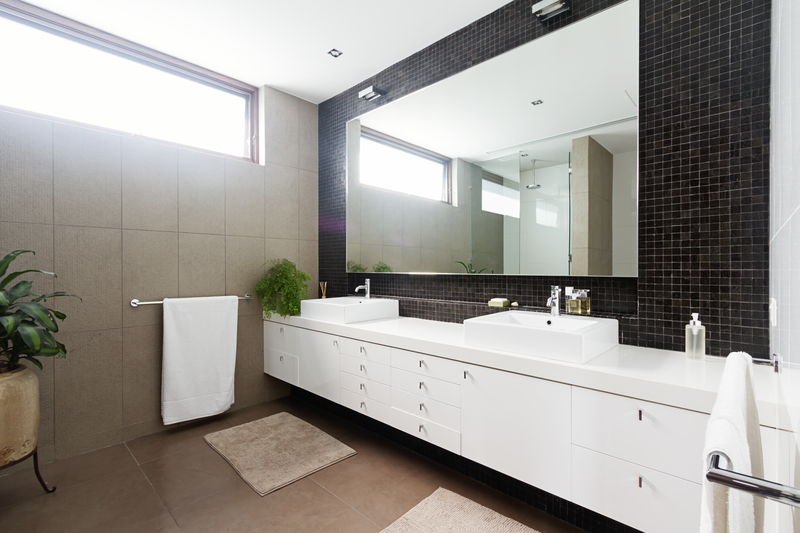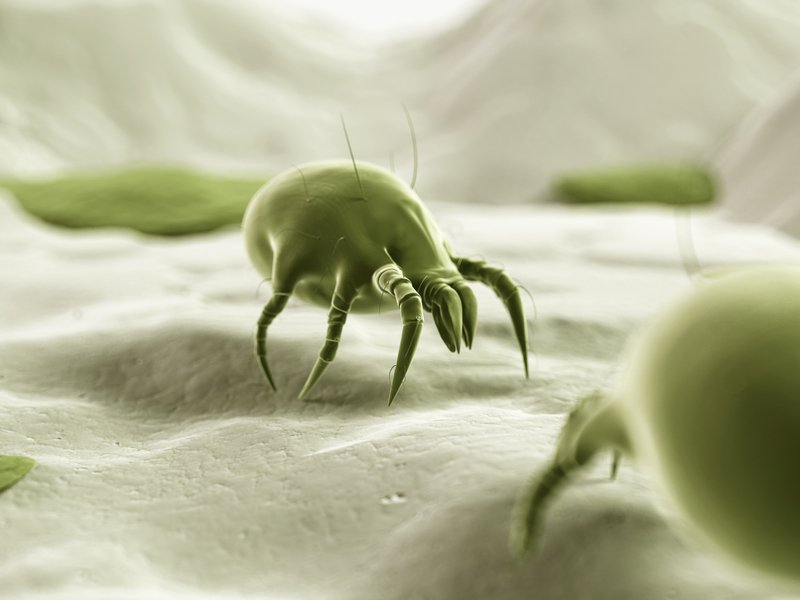Achieve a dust-free and allergen-reduced home with these expert tips
Posted on 04/09/2025
Ever wondered how to maintain a dust-free and allergen-free sanctuary in your house? In a time where allergy and respiratory issues are prevalent, curbing indoor air pollutants is crucial. This comprehensive guide provides expert advice and proven strategies to help you achieve a cleaner, healthier home environment by drastically reducing dust and allergens.
Why Is It Important to Reduce Dust and Allergens at Home?
A clean home is not just about appearances. Dust and allergens can negatively impact your health and wellbeing. For people with asthma, allergies, or respiratory conditions, even minor exposure can trigger symptoms. Additionally, dust mites, pet dander, mold spores, and pollen commonly lurk in indoor environments, making proactive allergen reduction vital.
- Improves Air Quality: Cleaner air means easier breathing--especially for children, seniors, and vulnerable family members.
- Reduces Allergy & Asthma Attacks: Lowering dust and allergens cuts down on irritating symptoms.
- Enhances Sleep Quality: Fewer allergens can lead to restful nights free from sneezing or coughing.
- Prevents Long-term Health Issues: Minimizing airborne pollutants helps reduce risks of chronic respiratory conditions.

Understanding Common Household Dust and Allergen Sources
Before you can effectively control indoor air quality, it's vital to recognize where dust and allergens originate.
Top Sources of Dust and Allergens Indoors
- Textiles: Fabrics like curtains, bedding, upholstered furniture, and carpets trap dust and allergens such as mites and pet dander.
- Pets: Even short-haired pets shed dander and fur, which contribute to household dust.
- Pollen: Enters through windows or is transferred on shoes and clothes.
- Mold Spores: Grow in damp or poorly ventilated areas like bathrooms.
- *Outdoor Pollutants*: Particles tracked inside from shoes and open windows.
- Dead Skin Cells: Humans naturally shed skin cells, which become major dust components.
Expert Tips to Achieve a Dust-Free and Allergen-Reduced Home
Follow these proven expert tips to eliminate dust and minimize allergens in every room of your house:
1. Establish a Regular Cleaning Routine
- Dust Surfaces Weekly:
- Use microfiber cloths rather than feather dusters, which just displace dust.
- Work from the top down--start with shelves and work toward the floor.
- Vacuum Frequently:
- Choose a vacuum with a HEPA filter to capture fine particles and allergens.
- Vacuum carpets, rugs, and upholstered furniture at least twice weekly (daily if you have pets, children, or allergies).
- Mop Hard Floors:
- Damp-mopping with water traps fine dust that brooms leave behind.
- Opt for allergen-reducing floor cleaners for wood or tile surfaces.
2. Control Humidity to Prevent Dust Mites and Mold
Dust mites and mold spores thrive in moist environments. To create a hostile environment for these allergens:
- Keep humidity below 50% using dehumidifiers and air conditioners.
- Ventilate bathrooms, kitchens, and laundry rooms to reduce condensation and moisture.
- Fix leaks and address water damage promptly to stop hidden mold.
3. Keep Bedding & Soft Furnishings Allergen-Free
- Wash Bedding Weekly: Use hot water (at least 130?F/55?C) to kill dust mites and remove allergens.
- Encapsulate Mattresses and Pillows with dust-mite-proof covers.
- Choose hypoallergenic materials for pillows, duvets, and mattresses.
- Wash throw pillows and blankets regularly; avoid accumulate dust traps.
4. Declutter and Organize to Prevent Dust Accumulation
The more items you have, the more places dust can settle.
- Limit Decorative Items: Display only what you enjoy most; rotate out knickknacks to simplify cleaning.
- Store Out-of-Season Clothes and Linens in sealed plastic bins.
- Opt for easy-to-clean surfaces and furniture.
5. Tackle Carpets and Rugs
- Deep Clean Regularly:
- Steam-clean carpets and rugs every 6 to 12 months.
- Area Rugs Over Wall-to-Wall Carpet:
- Rugs are easier to take outdoors and shake or wash.
- If possible, swap carpeting for hard flooring (tile, wood, vinyl) to truly reduce dust retention.
6. Minimize Entry of Dust and Outdoor Allergens
- Create a 'Shoe-Free' Policy Indoors:
- Ask everyone to leave shoes at the door to avoid bringing in outdoor dust and pollen.
- Provide washable mats at entryways.
- Keep Windows and Doors Closed During High-Pollen Seasons.
- Install door sweeps and weather stripping to minimize gaps.
7. Improve Home Ventilation and Air Filtration
Proper airflow and filtration are key to achieving an allergen-reduced indoor environment.
- Use a HEPA Air Purifier:
- Place in bedrooms and main living areas for best results.
- Change HVAC Filters Regularly:
- Replace or clean your furnace/AC filters every 1-3 months.
- Opt for HEPA or electrostatic filters for maximum allergen capture.
- Keep air vents and ducts clean and dust-free.
8. Pet Grooming and Pet Area Maintenance
- Bat Regularly:
- Reduce fur, dander, and saliva on animals that cause allergies.
- Keep Pets Off Soft Furnishings:
- Designate pet-free bedrooms to ensure an allergen-free sleep zone.
- Vacuum and wash pet bedding and toys often.
9. Don't Overlook Window Treatments
- Opt for Blinds Over Heavy Drapes:
- Blinds are easier to wipe clean and don't trap dust as much as fabric drapes.
- Wash Curtains Frequently if they're used, especially in allergy seasons.
10. Manage Allergens in Basements, Attics, & Storage Spaces
- Keep these areas dry and well-ventilated.
- Use moisture absorbers and dehumidifiers in damp-prone storage spaces.
- Store items off the ground in plastic containers to avoid dust and mold accumulation.
The Benefits of a Dust-Free and Allergen-Controlled Home
- Healthier Family Members: Fewer allergy and asthma attacks.
- Lower maintenance costs due to reduced mold and dust buildup.
- Improved Comfort: Clean air leads to more pleasant living conditions and better sleep.
- Peace of Mind: Confidence in knowing your home environment supports long-term health.
Room-by-Room Dust and Allergen Reduction Checklist
Living Room
- Vacuum carpets, rugs, and upholstery regularly.
- Dust electronics, shelves, and decorative items weekly.
- Use leather or removable slipcovers on furniture where possible.
Bedroom
- Wash bedding at high temperatures weekly.
- Encapsulate pillows and mattresses with dust-mite-proof covers.
- Minimize stuffed toys and decorative pillows.
Kitchen and Bathroom
- Clean floors and cabinets with damp cloths.
- Ventilate properly to limit moisture and mold.
- Dispose of food waste promptly to deter pests and mold.
Kids' Rooms/Nurseries
- Wash toys and stuffed animals regularly.
- Choose washable rugs and minimal fabric decor.
- Use allergy-proof mattress covers and washable curtains.
Entrances & Hallways
- Install doormats inside and outside entrances.
- Encourage removal of shoes at entryways.
- Vacuum high-traffic areas daily to limit dust spread.

Smart Products to Help You Achieve a Cleaner, Healthier Home
Consider investing in these dust-busting and allergen-reducing products for total home comfort:
- HEPA air purifiers for clean air in living and sleeping spaces.
- Dehumidifiers for basements, bathrooms, and kitchens to control mold.
- Robotic vacuums for daily sweeping in high-traffic areas.
- Washable slipcovers & pillow protectors to prevent allergen buildup.
- Steam mops for hard floor cleaning without harsh chemicals.
- Allergy-proof bedding and mattress protectors.
Conclusion: Your Allergen-Reduced, Dust-Free Home Awaits
Reducing dust and allergens in your home is entirely achievable with some dedication, the right tools, and consistent cleaning habits. Remember, the goal is not just a cleaner space but a healthier and more comfortable environment for you and your loved ones.
Use these expert cleaning strategies and best practices to achieve a dust-free, allergen-reduced home. You'll breathe easier, sleep better, and enjoy more peace of mind knowing your living space truly supports your wellbeing.
For continued success, make dust and allergen control a regular part of your home care routine. With persistence and the tips above, you can sustain a pristine, allergy-friendly haven year-round!



